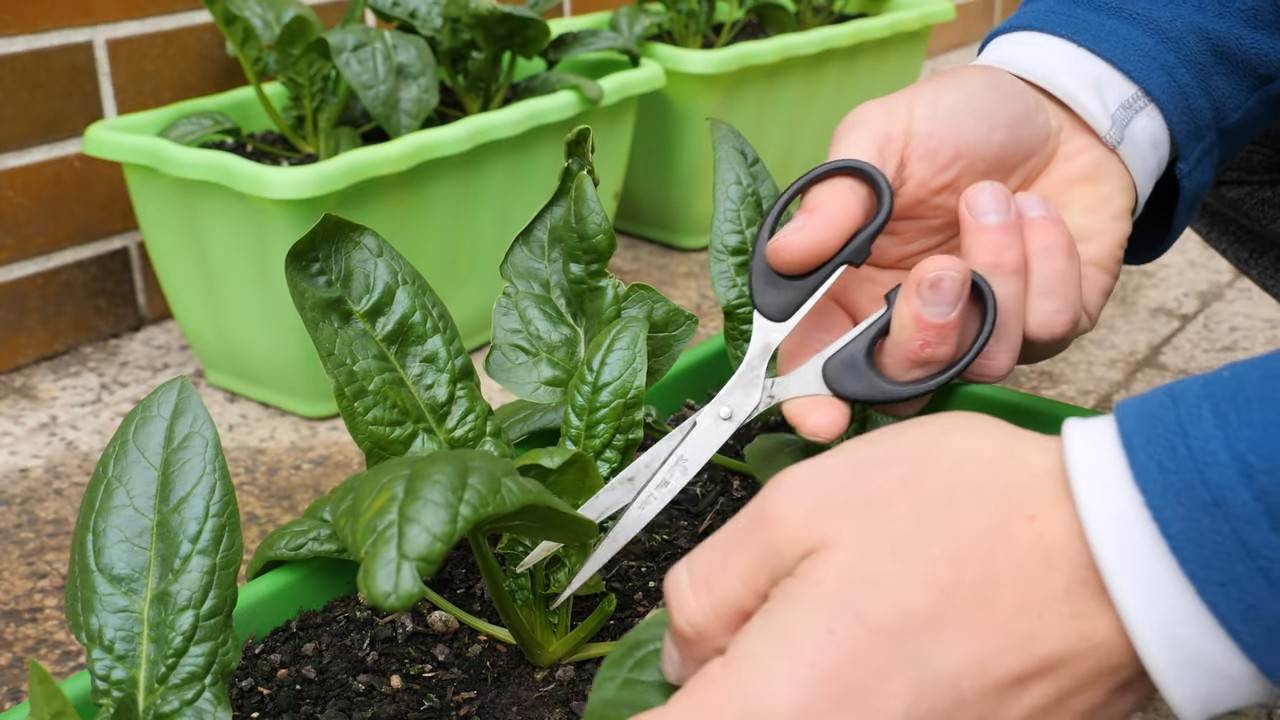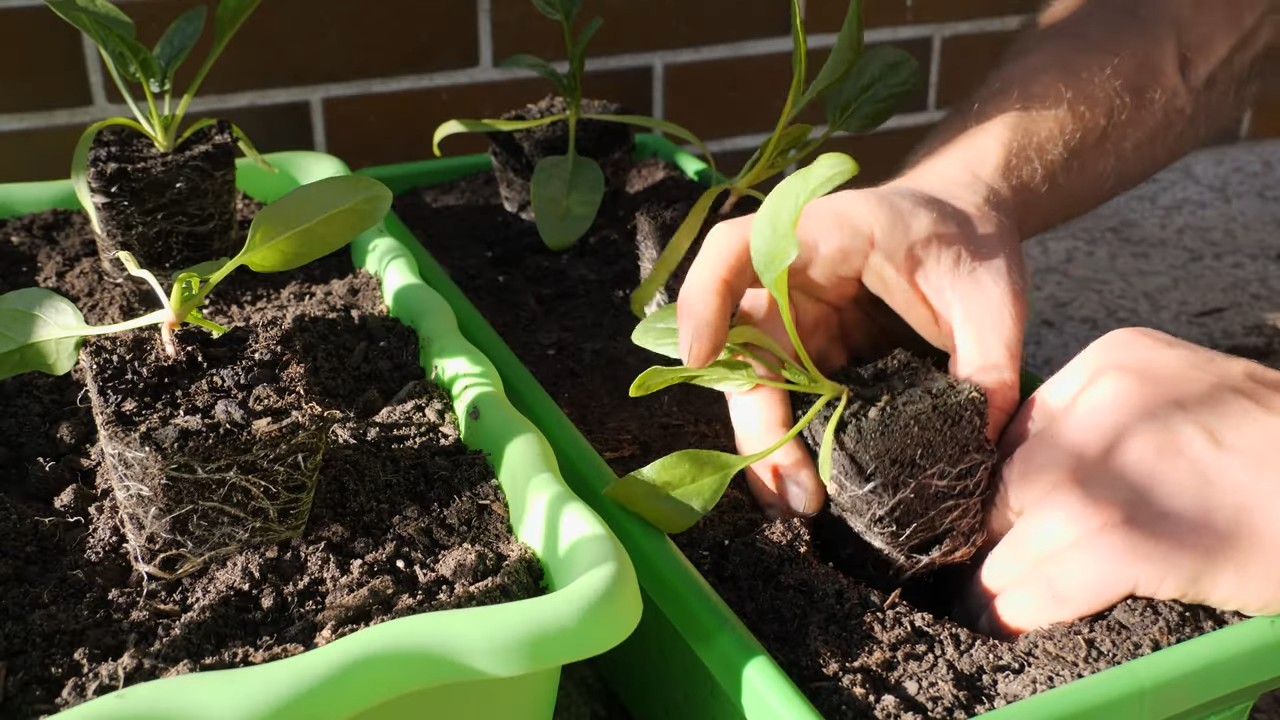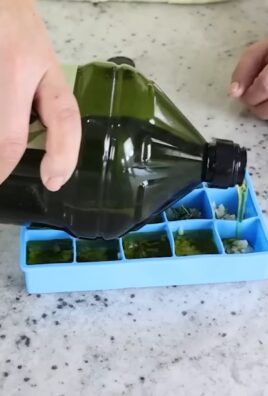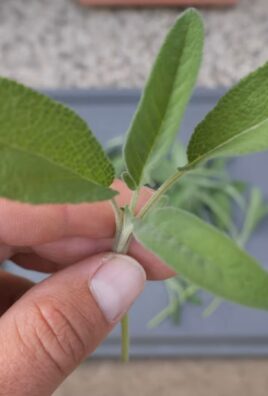Grow spinach at home, even if you think you have a black thumb! Are you tired of limp, pre-packaged spinach from the grocery store that wilts before you even get it home? I know I was! There’s nothing quite like the crisp, fresh taste of homegrown spinach, and trust me, it’s easier than you think. This isn’t just about having a salad ingredient; it’s about connecting with nature, enjoying the fruits (or rather, leaves!) of your labor, and knowing exactly where your food comes from.
Spinach has a rich history, dating back over 2,000 years to ancient Persia. It gradually spread across the globe, becoming a staple in cuisines worldwide. Think of Popeye and his incredible strength – spinach has always been associated with health and vitality! But beyond its nutritional benefits, growing your own spinach offers a unique sense of accomplishment.
In this DIY guide, I’m going to share my favorite home gardening tricks and hacks to help you grow spinach at home successfully, regardless of your experience level. We’ll cover everything from choosing the right variety and preparing your soil to pest control and harvesting. Say goodbye to store-bought spinach and hello to a bountiful, homegrown harvest! Let’s get started!

Grow Your Own Delicious Spinach: A Beginner’s Guide
Hey there, fellow gardening enthusiasts! I’m so excited to share my experience growing spinach at home. It’s surprisingly easy, even if you don’t have a huge garden. Fresh, homegrown spinach is so much tastier than the store-bought stuff, and knowing you grew it yourself is incredibly rewarding. Let’s dive in!
Choosing the Right Spinach Variety
Before we get our hands dirty, let’s talk about spinach varieties. There are a few different types, and choosing the right one for your climate and preferences is key.
* Savoy Spinach: This type has crinkled, curly leaves and a slightly stronger flavor. It’s cold-hardy, making it a good choice for cooler climates.
* Smooth-Leaf Spinach: As the name suggests, this spinach has smooth, flat leaves. It’s easier to clean than Savoy spinach and has a milder flavor.
* Semi-Savoy Spinach: This is a hybrid between Savoy and smooth-leaf spinach, offering a balance of texture and flavor. It’s also known for its disease resistance.
I personally prefer smooth-leaf spinach because it’s so easy to wash and use in salads. But feel free to experiment and find your favorite!
Getting Started: Planting Spinach
Spinach is a cool-season crop, which means it thrives in cooler temperatures. The best time to plant spinach is in early spring or early fall.
* Timing is Everything: Aim to plant your spinach seeds about 4-6 weeks before the last expected frost in spring, or 6-8 weeks before the first expected frost in fall.
* Soil Preparation: Spinach needs well-drained soil that’s rich in organic matter. Before planting, amend your soil with compost or well-rotted manure. This will provide essential nutrients and improve drainage.
* Sunlight: Spinach needs at least 3-4 hours of sunlight per day. Choose a location that gets morning sun and afternoon shade, especially in warmer climates.
* pH Level: Spinach prefers a soil pH between 6.5 and 7.0. You can test your soil pH with a home testing kit or send a sample to your local agricultural extension office.
Step-by-Step Planting Instructions
1. Prepare the Soil: Loosen the soil with a garden fork or tiller to a depth of about 6-8 inches. Remove any rocks, weeds, or debris. Incorporate compost or well-rotted manure into the soil.
2. Sow the Seeds: Spinach seeds are small, so be careful not to plant them too deep. Sow the seeds about ½ inch deep and 1 inch apart in rows that are 12-18 inches apart.
3. Water Gently: After planting, water the soil gently to avoid disturbing the seeds. Keep the soil consistently moist until the seeds germinate.
4. Thin Seedlings: Once the seedlings emerge and have a few true leaves, thin them to about 3-4 inches apart. This will give them enough space to grow and prevent overcrowding. Don’t just toss the thinned seedlings! You can carefully transplant them to another area of your garden or even enjoy them as microgreens in a salad.
5. Mulch (Optional): Applying a layer of mulch around your spinach plants can help retain moisture, suppress weeds, and regulate soil temperature. I like to use straw or shredded leaves as mulch.
Caring for Your Spinach Plants
Once your spinach plants are established, it’s important to provide them with proper care to ensure a healthy and abundant harvest.
* Watering: Spinach needs consistent moisture, especially during hot weather. Water deeply and regularly, but avoid overwatering, which can lead to root rot. Aim to keep the soil consistently moist but not soggy.
* Fertilizing: Spinach is a heavy feeder, so it benefits from regular fertilization. You can use a balanced organic fertilizer or side-dress your plants with compost tea every few weeks.
* Weeding: Keep your spinach patch free of weeds, which can compete with your plants for nutrients and water. Hand-pull weeds carefully to avoid disturbing the spinach roots.
* Pest Control: Spinach is relatively pest-resistant, but it can be susceptible to aphids, flea beetles, and leaf miners. Inspect your plants regularly for signs of pests and take action if necessary.
Dealing with Common Spinach Pests
* Aphids: These tiny insects suck the sap from spinach leaves, causing them to curl and yellow. You can control aphids by spraying your plants with a strong stream of water or using insecticidal soap.
* Flea Beetles: These small, jumping beetles chew tiny holes in spinach leaves. You can control flea beetles by covering your plants with row covers or using insecticidal dust.
* Leaf Miners: These insects tunnel inside spinach leaves, leaving behind unsightly trails. You can control leaf miners by removing and destroying infested leaves or using insecticidal soap.
Harvesting Your Spinach
The best part of growing spinach is harvesting your own fresh, delicious leaves!
* When to Harvest: You can start harvesting spinach leaves when they are about 4-6 inches long.
* How to Harvest: Use a sharp knife or scissors to cut the outer leaves, leaving the inner leaves to continue growing. This is known as “cut-and-come-again” harvesting, and it allows you to harvest spinach multiple times from the same plant.
* Harvesting in Hot Weather: Spinach tends to bolt (go to seed) in hot weather, which makes the leaves bitter. To prevent bolting, harvest your spinach frequently and provide shade during the hottest part of the day.
Tips for Extending Your Spinach Harvest
* Succession Planting: Plant new spinach seeds every few weeks to ensure a continuous harvest throughout the growing season.
* Cold Frames or Row Covers: Use cold frames or row covers to protect your spinach plants from frost and extend your harvest into the winter months.
* Choose Bolt-Resistant Varieties: Select spinach varieties that are known for their bolt resistance, especially if you live in a warm climate.
Storing Your Harvested Spinach
Once you’ve harvested your spinach, it’s important to store it properly to keep it fresh and delicious.
* Washing: Wash your spinach thoroughly to remove any dirt or debris.
* Drying: Dry your spinach leaves with a salad spinner or pat them dry with a clean towel.
* Storage: Store your spinach in a plastic bag or container in the refrigerator. It will stay fresh for about 5-7 days.
Freezing Spinach for Later Use
If you have a large harvest of spinach, you can freeze it for later use.
1. Blanch the Spinach: Blanch the spinach leaves in boiling water for 2-3 minutes. This will help preserve their color and flavor.
2. Cool the Spinach: Immediately transfer the blanched spinach to a bowl of ice water to stop the cooking process.
3. Drain and Squeeze: Drain the spinach well and squeeze out any excess water.
4. Package and Freeze: Package the spinach in freezer bags or containers, leaving some headspace for expansion. Freeze for up to 8-12 months.
Enjoying Your Homegrown Spinach
Now that you’ve grown and harvested your own spinach, it’s time to enjoy it! There are so many delicious ways to use fresh spinach.
* Salads: Add spinach to your favorite salads for a boost of nutrients and flavor.
* Smoothies: Blend spinach into your smoothies for a healthy and delicious green drink.
* Sautéed Spinach: Sauté spinach with garlic and olive oil for a simple and flavorful side dish.
* Spinach Dip: Use spinach to make a creamy and delicious spinach dip for parties or gatherings.
* Spinach Quiche: Add spinach to your quiche for a healthy and flavorful breakfast or brunch.
I hope this guide has inspired you to grow your own spinach at home. It’s a rewarding and delicious experience that anyone can enjoy. Happy gardening!

Conclusion
So, there you have it! Growing your own spinach at home isn’t just a fun project; it’s a gateway to fresher, more nutritious meals and a deeper connection with the food you eat. Forget those limp, pre-packaged greens from the supermarket. Imagine the vibrant, crisp taste of freshly harvested spinach, bursting with flavor and packed with vitamins. This DIY trick is a must-try because it empowers you to control the quality of your food, reduce your carbon footprint, and save money in the long run.
But the benefits don’t stop there. Growing spinach at home is incredibly versatile. You can experiment with different varieties, from smooth-leafed types perfect for salads to savoyed varieties ideal for cooking. Consider trying ‘Bloomsdale Long Standing’ for its heat tolerance or ‘Winter Bloomsdale’ for its cold hardiness. You can also tailor your growing methods to suit your space and preferences. Whether you have a sprawling garden, a sunny balcony, or just a windowsill, there’s a way to cultivate your own spinach patch.
For those with limited space, container gardening is an excellent option. Use a well-draining potting mix and choose a container that’s at least 6 inches deep. Place it in a sunny spot that receives at least 4-6 hours of direct sunlight per day. You can even grow spinach indoors under grow lights, ensuring a year-round supply of fresh greens.
Another variation to consider is succession planting. Sow seeds every few weeks to ensure a continuous harvest throughout the growing season. This way, you’ll always have a fresh supply of spinach on hand for salads, smoothies, soups, and more.
Don’t be intimidated if you’re a beginner gardener. Growing spinach is relatively easy, and the rewards are well worth the effort. With a little patience and attention, you’ll be enjoying homegrown spinach in no time.
We encourage you to give this DIY trick a try and experience the joy of growing your own food. It’s a simple, sustainable, and satisfying way to enhance your meals and connect with nature. And most importantly, it allows you to enjoy the freshest, most delicious spinach imaginable.
Once you’ve harvested your first crop, we’d love to hear about your experience. Share your tips, tricks, and photos in the comments below. Let’s build a community of home gardeners and inspire others to embrace the joys of growing their own spinach. Happy gardening!
Frequently Asked Questions (FAQ)
What is the best time of year to grow spinach?
Spinach is a cool-season crop, meaning it thrives in cooler temperatures. The best time to plant spinach is in early spring or early fall. In the spring, sow seeds as soon as the soil can be worked, typically 4-6 weeks before the last expected frost. For a fall harvest, plant seeds 6-8 weeks before the first expected frost. Avoid planting spinach during the heat of summer, as high temperatures can cause it to bolt (go to seed) prematurely, resulting in bitter-tasting leaves.
How much sunlight does spinach need?
Spinach needs at least 4-6 hours of direct sunlight per day to grow well. However, it can tolerate partial shade, especially during the hottest part of the day. If you’re growing spinach indoors, you’ll need to supplement with grow lights to provide adequate light.
What kind of soil is best for growing spinach?
Spinach prefers well-drained soil that is rich in organic matter. The ideal soil pH is between 6.0 and 7.0. Before planting, amend the soil with compost or other organic matter to improve drainage and fertility. If your soil is heavy clay, consider adding sand or perlite to improve drainage.
How often should I water spinach?
Spinach needs consistent moisture to grow well. Water deeply whenever the top inch of soil feels dry to the touch. Avoid overwatering, as this can lead to root rot. During hot weather, you may need to water more frequently.
How do I fertilize spinach?
Spinach is a heavy feeder, so it benefits from regular fertilization. Before planting, incorporate a slow-release fertilizer into the soil. During the growing season, fertilize every 2-3 weeks with a balanced liquid fertilizer. Avoid using fertilizers that are high in nitrogen, as this can cause the leaves to become too leafy and less flavorful.
How do I harvest spinach?
You can begin harvesting spinach leaves as soon as they are large enough to eat, typically about 4-6 weeks after planting. Harvest the outer leaves first, leaving the inner leaves to continue growing. You can also harvest the entire plant at once by cutting it off at the base.
What are some common pests and diseases that affect spinach?
Some common pests that affect spinach include aphids, flea beetles, and leaf miners. Diseases that can affect spinach include downy mildew, white rust, and fusarium wilt. To prevent pests and diseases, practice good garden hygiene, such as removing weeds and debris from the garden. You can also use organic pest control methods, such as insecticidal soap or neem oil.
How do I prevent spinach from bolting?
Bolting is when spinach plants prematurely go to seed, resulting in bitter-tasting leaves. To prevent bolting, plant spinach in early spring or early fall, avoid planting during the heat of summer, and provide adequate water and shade. You can also choose bolt-resistant varieties of spinach.
Can I grow spinach in containers?
Yes, spinach grows well in containers. Choose a container that is at least 6 inches deep and has drainage holes. Use a well-draining potting mix and place the container in a sunny spot that receives at least 4-6 hours of direct sunlight per day.
How long does it take for spinach to grow?
Spinach typically takes 4-6 weeks to mature, depending on the variety and growing conditions. You can begin harvesting leaves as soon as they are large enough to eat.
What are some good companion plants for spinach?
Good companion plants for spinach include radishes, lettuce, carrots, and onions. These plants can help to deter pests and improve the growth of spinach. Avoid planting spinach near fennel, as it can inhibit its growth.
How do I store harvested spinach?
To store harvested spinach, wash it thoroughly and pat it dry. Store it in a plastic bag in the refrigerator for up to a week. You can also freeze spinach for longer storage. To freeze spinach, blanch it in boiling water for 2 minutes, then plunge it into ice water. Drain the spinach and squeeze out any excess water. Store it in freezer bags or containers.





Leave a Comment